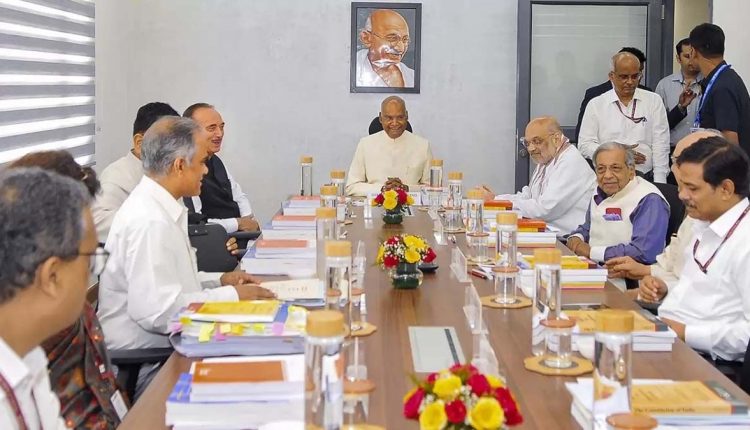New Delhi: In a significant stride towards electoral reform, the Modi government has granted cabinet approval to the report advocating for ‘One Country, One Election’. Chaired by former President Ram Nath Kovind, the committee’s recommendations aim to synchronize Lok Sabha and state assembly elections, a move that could streamline the electoral process across India. It is anticipated that the related bill will be introduced during the upcoming winter session of Parliament.
The ambitious initiative, while garnering support at the federal level, faces a multitude of challenges before it can be realised. Central to the implementation are the necessary constitutional amendments, which require not only passage in both houses of Parliament but also the consent of state legislatures—a formidable hurdle given the current political landscape.
Under the present administration, the National Democratic Alliance (NDA) holds a majority in both the Lok Sabha and the Rajya Sabha, a contrast to previous terms where the ruling coalition lacked dominance in the upper house. Despite this improved standing, the path to enacting ‘One Country, One Election’ remains steep. Union Minister Ashwini Vaishnaw highlighted past instances where the NDA managed to pass significant bills like the Jammu and Kashmir Reorganisation Bill, the Citizenship Amendment Act (CAA), and the Goods and Services Tax (GST) despite not having a Rajya Sabha majority. However, he acknowledged that the current endeavour is distinct in its complexity, necessitating broader consensus.
Implementing ‘One Country, One Election’ entails amending the Constitution, a process that demands not only a simple majority in both houses of Parliament but also a two-thirds majority of the members present and voting. With the BJP-led NDA securing 293 out of 543 seats in the Lok Sabha and 119 out of 245 seats in the Rajya Sabha, the opposition’s formidable presence—comprising 205 members across various parties including the Congress, Samajwadi Party (SP), Rashtriya Janata Dal (RJD), and Shiv Sena—poses a significant barrier.
Furthermore, gaining approval from state legislatures presents another layer of difficulty. While BJP-ruled states are likely to support the initiative, opposition-controlled states such as those governed by the Trinamool Congress (TMC), Congress, and the Left Front are expected to resist. Historical resistance is evident from states that previously opposed measures like the CAA and National Register of Citizens (NRC) through legislative resolutions.
The proposition also threatens the viability of regional parties, which thrive on local issues and distinct electoral strategies. The synchronization of national and state elections could undermine the influence of smaller parties, potentially consolidating power within national entities. This has led to strong opposition from numerous regional players who fear marginalisation in a unified electoral framework.
Union Minister Ashwini Vaishnaw reiterated the government’s commitment to building consensus, stating, “We will try to build a consensus in the next few months. Our government believes in building consensus on issues that affect democracy and the nation in the long run. High-level discussions will be held to engage various groups and parties.”
As the NDA navigates through these multifaceted challenges, the success of ‘One Country, One Election’ hinges on its ability to secure widespread political and constitutional support. The upcoming winter session of Parliament will be a critical juncture for the proposal, determining whether it can overcome the entrenched opposition and logistical complexities inherent in such a sweeping electoral reform.
The potential adoption of ‘One Country, One Election’ could revolutionise India’s democratic processes, reducing election fatigue and ensuring continuity in governance. However, the intricate interplay of political interests, constitutional mandates, and regional autonomy will ultimately shape the feasibility and timeline of this landmark initiative.
As the Modi government endeavors to transform this vision into reality, all eyes remain on the legislative maneuvers and state-level negotiations that will define the future of India’s electoral landscape.



Comments are closed.